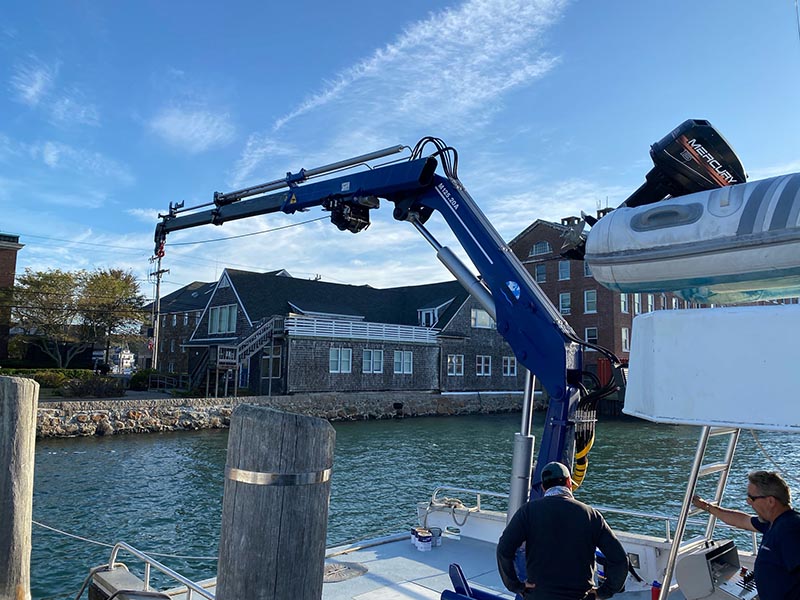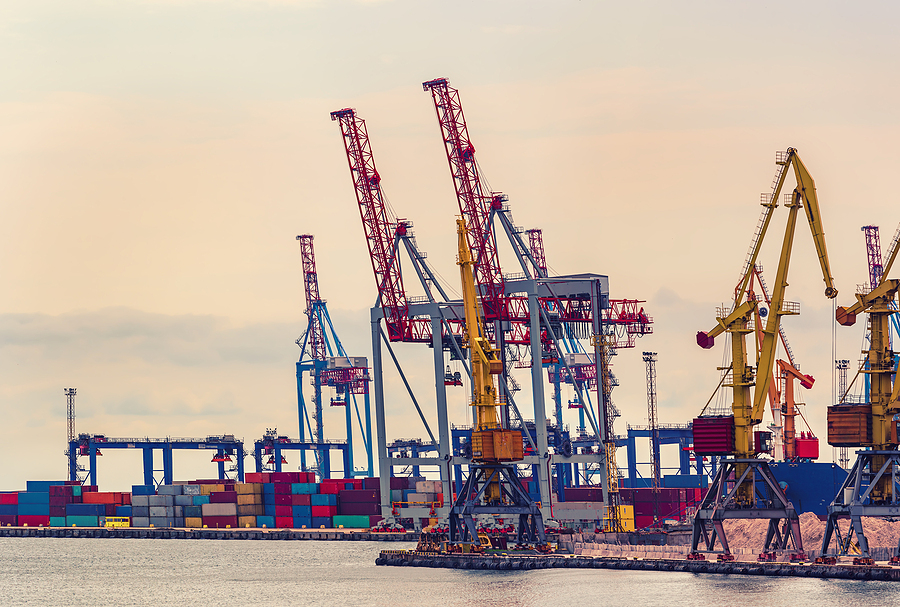When a deck crane hesitates, drifts, or screams on startup, the culprit is often hydraulic. Correctly diagnosing hydraulic issues in deck cranes starts with a disciplined, safety-first process and a few data points: pressures, flows, temperatures, contamination levels, and recent maintenance history. This guide lays out a practical playbook for hydraulic system troubleshooting on marine cranes, so you can separate symptoms from root causes and get back to work.
DMW Marine Group builds and services knuckle boom, telescopic boom, stiff-boom, and jib deck cranes designed specifically for harsh marine environments, tight deck envelopes, and side-load forces. That experience informs how we troubleshoot: start simple, measure early, and verify against standards.
Start With Safety and Standards
Hydraulics store energy. Before you open a line or pull a cartridge, lock out power, depressurize circuits, chock loads, and verify residual pressure is vented. Baseline your work against ISO 4413 (general rules and safety requirements for hydraulic systems). For shipboard context and documentation expectations, align with class guidance for lifting appliances (e.g., DNV ST-0377). This not only keeps people safe, it keeps your findings defensible during surveys and audits.
The Fast Five Checks
- Oil level & temperature: Low charge level or cold, high-viscosity oil can cause pump starvation and sluggish response. Warm the oil within spec before final judgments.
- Filter indicators & suction path: A collapsed element, clogged strainers, undersized suction hose, or air leaks on the inlet side invite cavitation/aeration and noise.
- Case-drain flow (pumps & motors): Excessive case flow hints at internal wear; trend against OEM baseline.
- Contamination level (ISO 4406): A spot check tells you if particles, not components, are the real problem. Record the three-number code (e.g., 18/16/13) and compare to target.
- Visible leaks & hose condition: Salt, UV, and flex cycles accelerate hose aging on deck cranes; any wet line near pilot circuits can mimic control faults. (General best practice per class and OEM guidance.)
Symptom and First Measurements
Field diagnostics work best when symptoms map to a small set of checks.
Loud Whining, Crackling, or “Gravel” Sound at the Pump
Likely cavitation or aeration. Look for inlet restrictions, loose fittings (drawing air), cold oil, or low reservoir level. Confirm with a vacuum gauge at the pump inlet and inspect filters/strainers. Persistent cavitation pits metal and shortens pump life, so resolve before extended running. =
Slow Hoist or Weak Luffing Under Load
Suspects include: relief valve set too low or stuck slightly open, worn pump (excessive internal leakage), bypassing valve spool, or case-drain flows above normal. Measure system pressure at the relevant test port while commanding the function, then compare to SWL test values. A flow meter in series or case-drain measurement can distinguish wear from a control issue.
Jerky Motion or Poor Fine Control
Often air entrainment, sticky spool due to varnish/contamination, or unstable counterbalance/load-holding valve. Check fluid cleanliness per ISO 4406 and oil condition; sample for water (a common marine contaminant) that damages lubricity and seal life. If jerking only occurs during feathering, inspect pilot pressure stability and valve condition.
Cylinder Drift at Rest
Contrary to popular belief, piston-seal leakage isn’t the only cause. A leaking load-holding (counterbalance) valve, bypass in the directional valve, or thermal expansion effects can all move the boom or jib. Isolate circuits and monitor pressure equalization to separate valve leakage from cylinder leakage.
Crane Starts But Won’t Operate Functions
This classic deck-crane complaint often traces to missing pilot pressure, tripped interlocks/limits, or deadman circuits, not the main pump. Verify pilot supply, solenoid energization, and safety chain continuity before pulling hydraulic iron.
Contamination: The Hidden Saboteur
Across fleets, contamination remains the leading root cause of hydraulic failures. ISO 4406 provides a universal language for particle counts at ≥4 µm, ≥6 µm, and ≥14 µm; each step up roughly doubles particle concentration. Marine service is hard on oil, condensation, salt ingress, and fine rust demand better filtration and breathers (desiccant or spin-on) to keep water out. Keep a standing target cleanliness code for each crane family, trend samples, and escalate when codes drift up.
Pressure, Flow, and Heat: Your Three Numbers
Every meaningful hydraulic diagnosis nets three numbers: pressure (can you make and hold it), flow (can you deliver it at commanded speed), and temperature (are you converting energy to heat via leakage). If pressure is low at rated command, but temperature climbs, internal leakage is likely. If pressure is fine but speed is low, suspect flow deficiency, pump wear, speed control, or a partially blocked path. Quick-connect test points on DMW cranes make these measurements faster during hydraulic system troubleshooting.
Valves That Matter Most on Deck Cranes
Marine cranes rely on counterbalance (load-holding) valves for safe luffing and boom control, plus main reliefs, port reliefs, and anti-cavitation checks. When boom motion hunts or overruns, verify the counterbalance valve’s cracking pressure and pilot ratio against spec. Sticky spools from varnish can mimic electronics faults; if electrical tests are clean, pull and inspect cartridges for scoring or varnish glaze. (Follow ISO 4413 practices for cleanliness and safe depressurization.)
Hoses, Seals, and Cylinders in a Salt-Fog World
Salt accelerates jacket cracking and wire-braid corrosion; UV hardens the cover. Any pinhole sprays atomized oil, both a slip hazard and a contamination source. In cylinders, particulate and water attack rod seals and wipers, which admits more contamination in a loop. If a rod weeps and fine control degrades, you’re likely seeing the lifecycle cost of contamination. Addressing root cleanliness, not just replacing seals, extends service intervals.
When It’s The Pump (And When It Isn’t)
Axial-piston and vane pumps eventually wear. Rising case-drain flow, inability to reach set pressure under load, and cavitation noise despite a healthy inlet all point toward overhaul or replacement. But many “bad pump” calls turn out to be inlet restrictions or aeration. Before you condemn a pump, prove inlet vacuum is in range, temperature/viscosity are correct, and filters are healthy. Then compare case-drain flow to OEM limits at a known pressure.
Bulletproofing With Better Filtration (and Records)
- Set cleanliness targets by crane family and document ISO 4406 results in each service.
- Upgrade breathers to desiccant types where humidity is high; salt-air decks qualify.
These two moves alone lower varnish formation, reduce sticking spools, and lengthen pump life—wins you can measure on the next sample.
Why This Matters Now
From 2026, SOLAS Reg. II-1/3-13 harmonizes expectations for examinations, load tests, maintenance, and inspections of onboard lifting appliances. Clean documentation and standard procedures for hydraulic condition (pressure checks, contamination logs, hose replacement intervals) make compliance simpler, and outages rarer. If you operate geared vessels or workboats relying on their own deck cranes, getting your hydraulic playbook in order pays off in port time saved.
How DMW Marine Group Helps
DMW’s team doesn’t just build cranes, we support them across their life cycle with troubleshooting, component replacement, retrofits, and operator training. Whether it’s a knuckle boom with jerky luffing, a telescopic boom losing speed hot, or a stiff-boom creeping down overnight, we bring the gauges, the parts, and the experience to prove the fault and fix it.
Need expert help diagnosing hydraulic issues in deck cranes, fast? DMW Marine Group offers on-vessel hydraulic system troubleshooting, fluid analysis (ISO 4406), counterbalance/relief tuning, hose/valve replacements, and full pump/motor service for knuckle boom, telescopic, and stiff-boom cranes. Contact DMW Marine Group to schedule a service call and get your crane back to smooth, safe operation.




